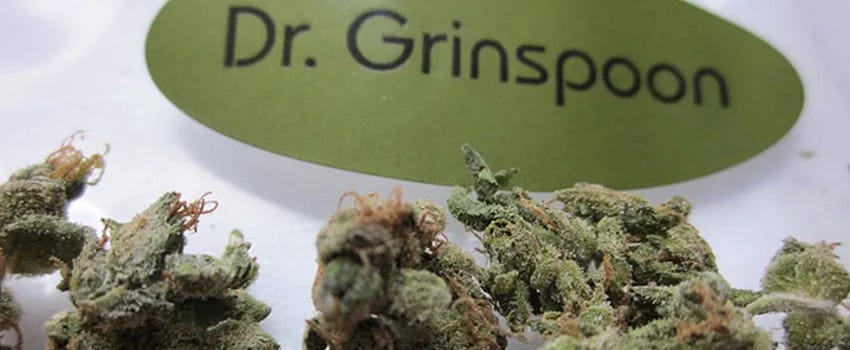Using cannabis safely
Knowledge is power
A sample of the strain of cannabis “Dr. Grinspoon” is seen at a legal marijuana shop in NYC.
Half of Americans have tried cannabis and tens of millions consume it regularly in the United States. Worldwide, there are hundreds of millions of cannabis users. This usage is providing immense relief – often beyond what traditional pharmaceutical might provide - to many people suffering from such miserable conditions such as chronic pain, anxiety, and insomnia. As legalization is sweeping across the nation, and the globe, this cannabis use is not going away.
How can we maximize the safety of cannabis use and minimize any associated harms?
Any medications that we prescribe, or that patients use on their own, can have potentially serious side effects. Even a modest dose of plain old penicillin to treat strep throat can kill if there is an allergy. With medicines, there truly is no free lunch. It is always a trade-off between potential adverse side effects and anticipated benefits. This is every bit as true for medical cannabis as it is for other drugs. For the prescriber, it is a question of which is the least toxic alternative for any given condition.
With good education and with sensible regulation, many of the very real potential harms associated with cannabis usage can be avoided or minimized. Legalization is critical as it leads to a far safer product, and it largely avoids the damages that accompany entanglements with law enforcement. These almost always exceed any problems associated with cannabis use itself. For example, we have had more than twenty million utterly pointless arrests in this country for nonviolent cannabis possession over the last half-century, mostly of people with dark skin. These arrests affect employment, housing and education in a way that vastly transcends any harms that cannabis use can possibly cause.
What are the different methods to consume cannabis?
Cannabis can be consumed in a variety of ways, such as by inhalation, by using a tincture under the tongue, by eating an edible, or by applying a topical lotion. Each of these methods has distinct advantages and disadvantages.
Keep reading with a 7-day free trial
Subscribe to Grinspoon on Drugs to keep reading this post and get 7 days of free access to the full post archives.



